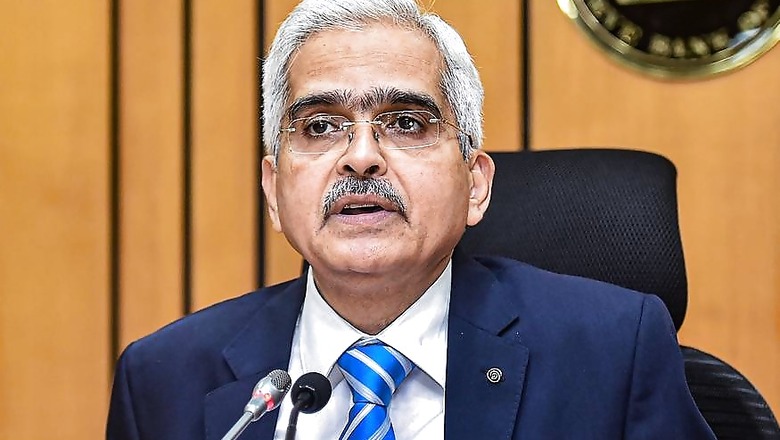
views
India’s central bank has followed its global peers in announcing an unprecedented 75 basis points (0.75%) cut in lending rates besides a lot of other measures to infuse liquidity. The measures announced on Friday should encourage banks to lend more and take away some of the perceived stress on banks’ finances.
The RBI has also allowed a three-month moratorium on existing EMIs and all sorts of term loans, whether availed by businesses or individuals. Also, if an individual were to look out for a new home loan or a new loan to buy a car, the interest rates available now will be the lowest in years, thanks to the latest rate cut.
If one already has a loan, one can sit back and defer the monthly repayment for the next three months without attracting any adverse impact on one’s CIBIL score.
An almost similar provision has been made for businesses which are indebted from loans for working capital and other needs: these companies can also defer repayments for three months without a black mark on their credit score.
As for banks, their operations have been eased, since they are now required to park less money with the RBI and consequently have more money available for lending. Also, small businesses which need an overdraft on working capital limits can now avail of this facility.
So in essence, the RBI has allowed relief to the corporate sector, to banks and to individuals worried about pending EMIs. There is no waiver of loans, which means each segment of the economy will have to repay the loans taken, only a three-month moratorium has been provided.
The only trouble with today’s RBI announcements is this: most of the measures do not address the situation prevailing now, where a physical three-week lockdown means there are no takers of cheaper loans, banks are unable to expand lending and equity markets remain volatile.
As one expert pointed out, the issue being faced by the Indian economy right now is of liability and demand, not so much on the supply side. And the measures announced today will do little to generate demand in the economy.
Another point of view was that the central bank has provided “momentary” respite for corporates and banks and may need to come forward with more measures after some time, when the lockdown is lifted.
But others like Sajid Chenoy of JPMorgan termed the announcements by the RBI this morning as a “bazooka” and said they were similar in expanse and scope to what the US Federal Reserve had announced earlier. Several bankers and sector experts welcomed the measures to enhance liquidity in the system and the massive rate cut for lending.
But will banks be offering emergency credit lines to businesses suffering badly due to the COVID-19 fallout, like airlines, retail and hospitality, which need to pay salaries etc but have no income?
The measures will probably ensure that the current crisis engulfing businesses does not lead to permanent bankruptcy and businesses do not shut down. Whether these measures will kickstart the economy, is a secondary though important consideration.
For that to happen, the government and the RBI will need to come forward with more measures in the coming weeks, so that a comprehensive fiscal and monetary response to the pandemic is unleashed. On Thursday, finance minister Nirmala Sitharaman had announced a Rs 1.7 lakh crore economic package targeted at the poor and the underprivileged.
Here’s what the RBI has announced:
- The policy repo rate (rate at which RBI lends to banks) reduced by 75 basis points to 4.40% from 5.15% with immediate effect.
- Reverse repo rate reduced by 90 basis points to 4%.
- Cash reserve ratio cut by 100 basis points to 3%, SLR to be reduced by 3%.
- Measures to increase liquidity will release an additional Rs 3.74 lakh crore into the system.
- All banks including scheduled commercial banks, local area banks, small finance banks, regional rural banks, non-banking financial companies, housing finance companies permitted to allow a moratorium of 3 months on payment of instalments.
- For working capital facilities sanctioned as cash credit/overdraft, lending institutions now permitted to allow a three-month deferment on payment of interest.
Upasna Bhardwaj, Senior Economist at Kotak Mahindra Bank, said she expected another 40-50 basis point rate cut going forward. “RBI, very correctly so, announced a comprehensive bazooka covering all aspects of the economy by taking measures system-wide both through liquidity, rates and regulatory forbearance (retail as well as for industry) and also targeted measures to manage the corporate bond markets,” she said.
She added that the measures should help in tiding through the end of the year issues which many banks/institutions were fearing and will go a long way in cushioning the dislocations in various markets. “We expect additional scope for 40-50bps of rate cut with any further easing and extension of measures depending on the nature of spread of COVID-19,” she said.
The government and the central bank will obviously need to take more steps to tackle the spiralling economic crisis amid COVID-19 lockdown. But economists have already downgraded estimate. On Friday, Moody’s Investor Services has already nearly halved India’s GDP growth rate forecast for 2019-20 to 2.5%.
Given the uncertainty in the economy, the RBI did not provide any growth or inflation estimates for the year. It said that risks can emerge both from the demand and the supply, adding that the central bank will do whatever is necessary to shield the economy.
The author is a senior journalist. Views expressed are personal.


















Comments
0 comment